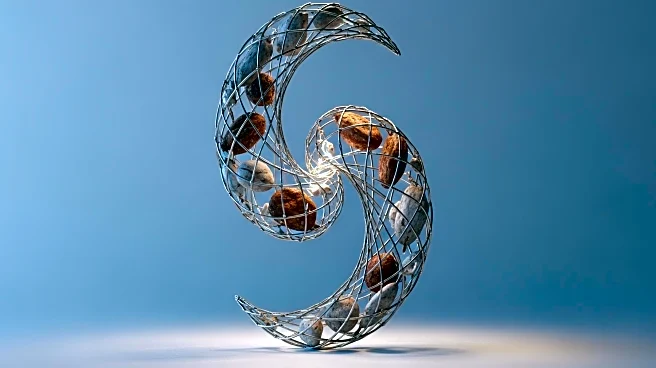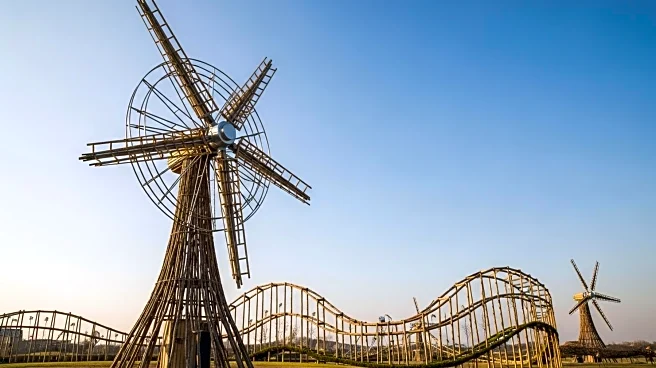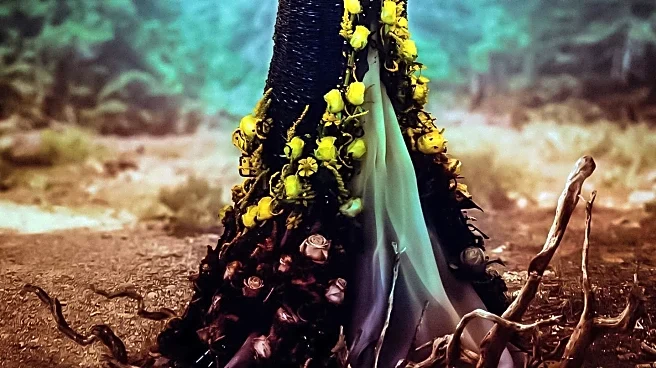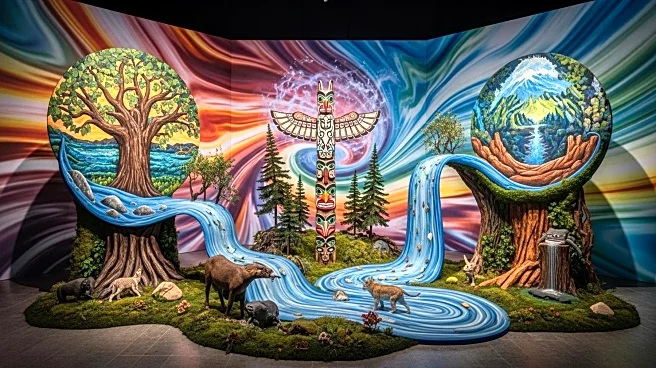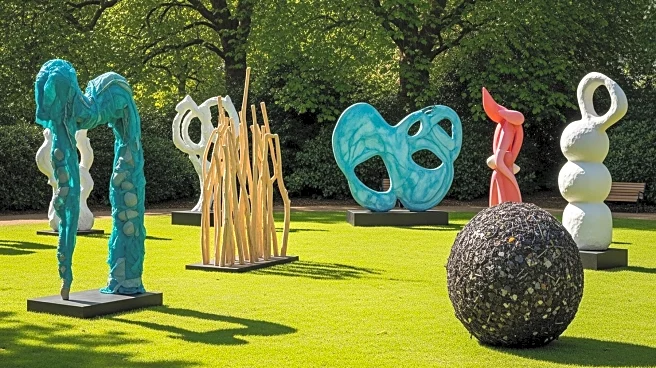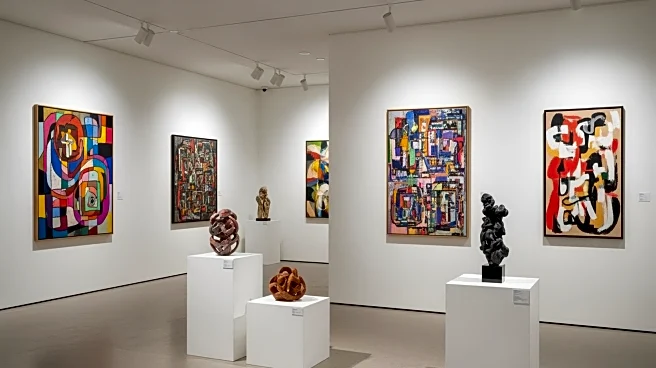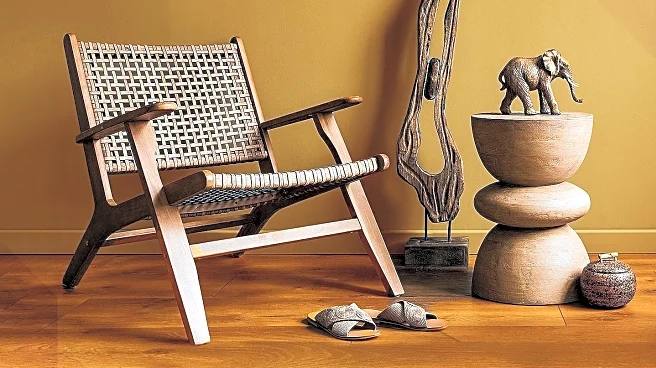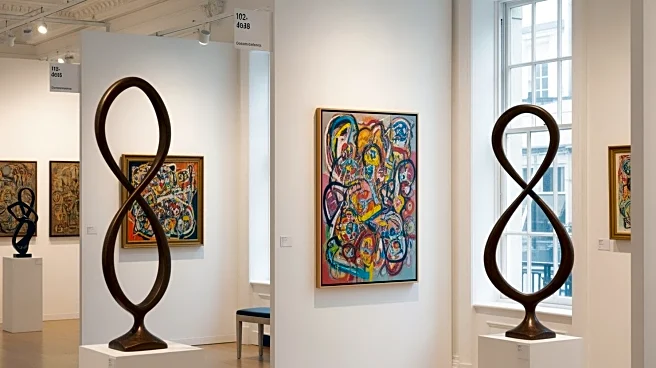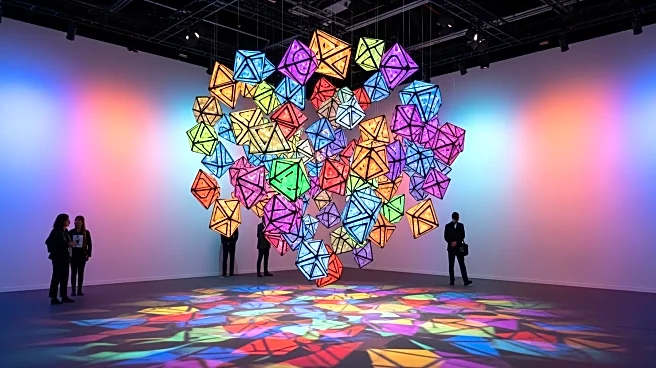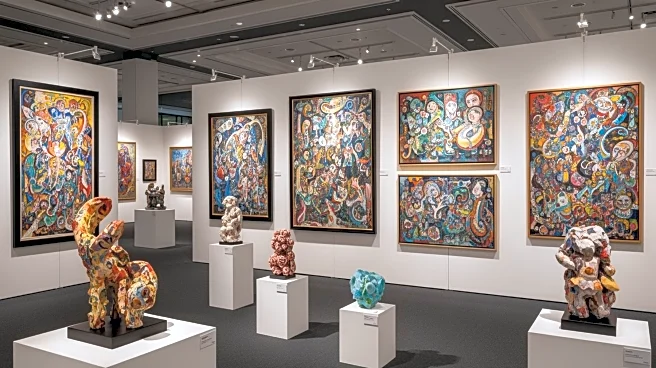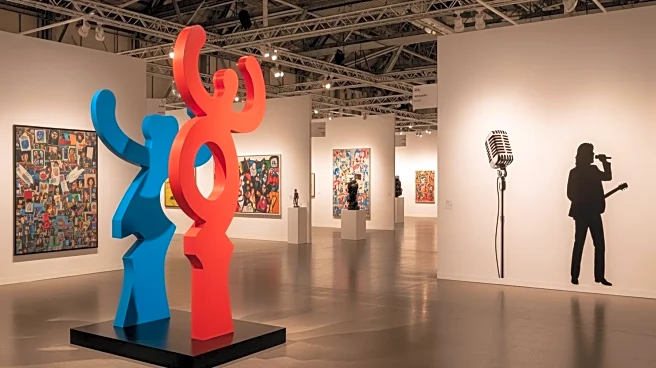What's Happening?
The Tate Modern in London has unveiled its annual Turbine Hall commission, featuring a subtle installation by Sámi artist Máret Ánne Sara. The work, titled Goavve-Geabbil, invites viewers to engage intimately with Sámi philosophy, emphasizing the sacred interdependence between humans and nature. The installation includes a maze-like structure with fur-lined seats and headphones, allowing visitors to listen to Sara's personal account of reindeer herding. The work also features reindeer skulls, symbolizing the respectful use of the animal's entire being. The installation aims to highlight the humble position of humans within nature's systems, contrasting modern rationality with Sámi perspectives.
Why It's Important?
Sara's installation at Tate Modern is significant as it challenges the conventional narratives of human dominance over nature, promoting a philosophy of equality and respect for all living beings. This perspective is particularly relevant in the context of ongoing environmental challenges and the exploitation of Indigenous lands. By incorporating elements of Sámi culture and philosophy, the installation fosters a deeper understanding of Indigenous knowledge systems and their potential contributions to contemporary environmental discourse. The work also raises awareness about the impact of climate change and industrial activities on Indigenous communities, urging a reevaluation of capitalist and extractive practices.
What's Next?
The installation will be on view until April 6, 2026, providing an opportunity for continued engagement and reflection on the themes presented. As audiences interact with the work, there may be increased dialogue around the integration of Indigenous philosophies into broader environmental and cultural discussions. The exhibition could inspire other institutions to incorporate Indigenous perspectives into their programming, fostering greater inclusivity and understanding. Additionally, the installation may prompt further exploration of the ethical dimensions of art and its role in advocating for social and environmental justice.
Beyond the Headlines
Sara's work not only highlights the importance of Indigenous knowledge but also critiques the mechanisms of capitalism and extractivism that threaten these communities. By using materials imbued with life energy, the installation serves as a powerful symbol of resistance against the commodification of nature. The work encourages viewers to reconsider their relationship with the environment and the ethical implications of their actions. It also underscores the need for institutions to actively support and represent the cultures from which they draw inspiration, fostering a more equitable and respectful cultural landscape.
